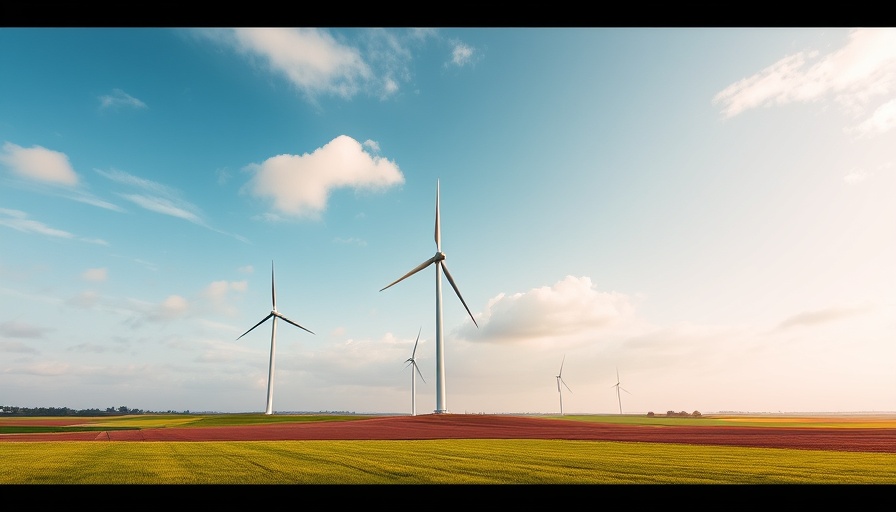
Pennsylvania's Future Energy Landscape: A Rising Demand
As Pennsylvania faces an unprecedented surge in electricity demand, lawmakers are stepping up to address the challenges and opportunities that lie ahead. During a recent hearing, state lawmakers examined testimony on strategies to enhance the reliability and affordability of power, emphasizing the need for greater integration of renewable energy sources.
The Impending Energy Crisis: Understanding the Numbers
PJM Interconnection, the electricity grid operator for Pennsylvania and 12 neighboring states, has forecasted a significant increase in peak demand—from approximately 150,000 megawatts to 220,000 megawatts by 2040. This increase represents a staggering growth influenced by two main factors: the electrification of transportation and industry, coupled with a surge in data center proliferation. These developments are essential for supporting advanced technologies, such as artificial intelligence.
Legislative Moves: The Pennsylvania Reliable Energy Sustainability Standard (PRESS)
In response to the looming energy demands, Democratic Governor Josh Shapiro has proposed the Pennsylvania Reliable Energy Sustainability Standard (PRESS). This legislation aims to set ambitious targets for renewable energy generation, requiring 35% of the state's electricity to come from clean sources by 2035. The initiative is framed as a pathway to attract new investments and create around 14,500 jobs while establishing incentives for renewable energy development.
Balancing Act: Navigating Energy Sources
While the push for renewable energy sources is gaining momentum, not everyone agrees on the suitability of the state’s energy transition. At the hearing, Evan Vaughn, executive director of the Mid-Atlantic Renewable Energy Coalition, highlighted that achieving the projected energy growth will require contributions from all energy sources, including wind, solar, and nuclear power.
Supporting Infrastructure and Future Innovations in Energy
To bolster energy generation, the Lightning energy plan introduced by Shapiro outlines financial mechanisms through the Economic Development for a Growing Economy (EDGE) Tax Credit. This program would potentially provide up to $100 million per facility to incentivize developers in adding renewable energy capacity to the grid, especially in the state’s planned regional hydrogen hubs.
Local Perspectives: What This Means for Pennsylvanians
The energy transition resonates deeply with local communities, which may ultimately bear the brunt of any energy policy shifts. State Representative Danielle Friel-Otten pointed out that Pennsylvanians are not immune to the broader ramifications of global energy demand—escalating prices could affect families and businesses alike. Consequently, the debate surrounding renewable versus traditional energy sources remains a pressing concern, emphasizing the need for transparency and widespread community engagement.
Potential Economic Impacts: Jobs and Investments
With the implementation of PRESS and the support of the Lightning energy plan, Pennsylvania stands on the brink of an economic transformation. Experts argue that enhancing the renewable energy sector could provide significant employment opportunities while fostering sustainable growth. The promise of new jobs resonates strongly with residents eager to invest in cleaner technologies and innovative energy solutions.
Common Misconceptions: The Reality of Renewable Energy
While the benefits of renewable energy are often touted, misconceptions persist about its reliability. Critics argue that relying too heavily on wind and solar energy could jeopardize grid stability. However, advancements in energy storage technologies, such as battery systems, are quickly addressing these concerns, proving that a balanced energy portfolio incorporating renewables can lead to a stable and secure power source.
Conclusion: A Call for Awareness and Engagement
As Pennsylvanians prepare for a future driven by increasing energy demands, understanding the implications of legislative efforts such as PRESS becomes essential. Engaging with local representatives and staying informed about energy policies can empower residents to advocate for a balanced approach that ensures both economic growth and environmental sustainability.
It's time for individuals and communities to consider how they can participate in this energy transition actively. By voicing concerns, participating in public discussions, and supporting initiatives that aim to balance energy demands with sustainable practices, Pennsylvanians can play a crucial role in shaping the future of their energy landscape.
 Add Row
Add Row  Add
Add 




 Add Row
Add Row  Add
Add 

Write A Comment